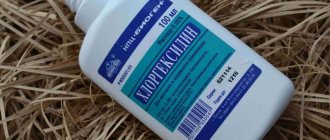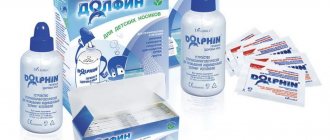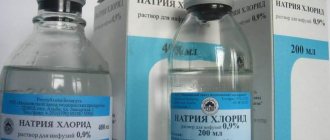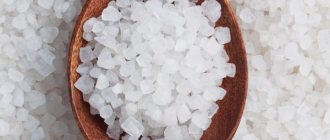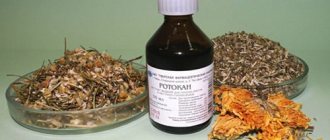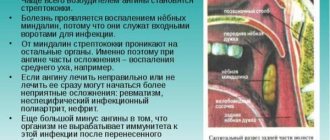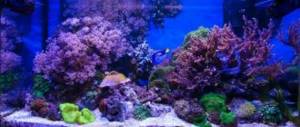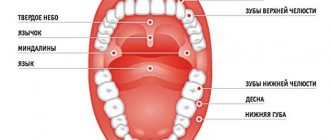How to prepare a saline solution for rinsing the nose is a question that interests people with the onset of cold weather. After all, it is at this time of year that the likelihood of developing rhinitis and other diseases affecting the upper respiratory tract increases significantly.
The best way to treat and prevent nasal diseases is to rinse it with a salt solution. Let's look at how to make a saline solution for rinsing the nose and how to use it.
For a brine solution you need clean water and salt, preferably sea salt.
What are the benefits of nasal rinsing?
Saline solution for rinsing the nose is an effective and affordable remedy for the treatment of rhinitis and sinusitis. You don't need to buy expensive products for this. All you need for the procedure is clean water and salt, preferably sea salt.
Rinsing your nose with saline kills many pathogens. In addition, this procedure disinfects the nasal cavity. Flushing clears it of the accumulation of mucus and bacteria, this eliminates swelling and facilitates nasal breathing.
This procedure is completely safe and does not cause complications. In addition, it can be performed on all categories of patients: children, the elderly and pregnant women. If done regularly, it will promote faster recovery.
Saline solution for the nose helps cope with the consequences of acute respiratory disease in young children. They are extremely prone to colds. Infection of the nasal cavity with pathogenic microorganisms negatively affects not only well-being, but also the functioning of various organs and systems.
The recipe for preparing the solution is to dilute it in 1 tbsp. water a small amount of table or sea salt
The nasal rinsing procedure will be very useful in the following cases:
- acute respiratory diseases accompanied by a severe runny nose,
- flu,
- frontal sinusitis and sinusitis,
- vasomotor type rhinitis,
- allergic diseases accompanied by severe rhinitis,
- prevention of colds,
Anyone with a cold can rinse their nose at home without resorting to buying expensive medications.
Recipes for saline nasal rinse
Before making a saline solution, select the optimal composition for rinsing your nose. Variations vary depending on the disease present.
No. 1. Standard solution for adults
1. Combine hot water (500 ml.) with 1 tsp. sea salt. Allow the grains to dissolve and the solution to cool to a comfortable temperature.
2. Irrigate the nostrils up to 4 times daily. The presented composition can be used during pregnancy.
No. 2. Solution with iodine for sinusitis
1. Rinsing the nose with saline solution is practiced for sinusitis. Warm up 0.3 liters to a comfortable temperature. water, add 1 tsp. salt, add a drop of iodine.
2. Make sure that the crystals have dissolved, then proceed with the procedure. Carry out manipulations up to 5 times a day.
No. 3. Solution for rhinitis
1. To make rinsing your nose with saline solution comfortable at home, follow the rules. Dissolve in 240 ml. boiling water 10 gr. salt.
2. Leave to cool to an acceptable temperature. Carry out the procedure after waking up and before going to bed. The downside of the product is that it dries out the mucous membrane. Not suitable for children.
No. 4. Solution with iodine and soda
1. Combine in 0.5 l. non-hot water 3 drops of iodine, 10 g. salt and 5 gr. soda Do rinsing three times a day.
2. As a result, the mucous membrane is disinfected, congestion and inflammation disappear.
No. 5. Solution for infants
1. Rinsing the nose with sea salt is allowed for children. At home, it is enough to prepare a solution.
2. In 0.3 l. dissolve 2 grams of boiling water. salt. Cool the product and drop 2 drops with a pipette to the baby up to 5 times a day.
No. 6. Soda solution
1. Dissolve in 0.5 l. warm water 1 tsp. baking soda and 3 tsp. salt. To carry out the procedure comfortably, use a small watering can.
2. To eliminate inflammation and swelling, perform 3 procedures. The advantage of the composition is that it has a pronounced bactericidal effect.
No. 7. Solution for a child according to Komarovsky
1. Nasal rinsing according to Komarovsky can be done with either physiological or saline solution at home.
2. Make your own liquid from 1 liter. lukewarm water and 1 tsp. table salt. Carry out the procedure with a syringe three times a day.
How to make a solution
The recipe for preparing the solution is very simple. Must be diluted in 1 tbsp. water, a small amount of table or sea salt. The latter can be bought at the pharmacy.
Depending on the degree of damage to the nasal mucosa, the amount of salt can be slightly changed. In addition, other useful components can be added to the resulting solution, which will have a beneficial effect on nasal health. At home you can do:
- saline solution with the addition of natural essential oils (all of which are sold in pharmacies),
- a solution based on decoctions of medicinal herbs (for example, chamomile, string, calendula, eucalyptus, St. John's wort),
- you can add a little alcohol tincture of the indicated herbs to the rinsing composition (they are also sold in pharmacies),
- You can prepare a solution based on furatsilin.
If you take unboiled water from the tap to prepare the solution, you can achieve the exact opposite effect. The fact is that such water contains a large number of bacteria that can be introduced into the mucous membrane and provoke an even more severe infection.
Water that is too hot can irritate your nose. Cold water also causes the same effect.
Do not use water that is too hot or too cold
A solution with the addition of sea salt is prepared in the same way. Before buying sea salt at the pharmacy, you need to make sure that it does not contain additional impurities. As a rinse, you can prepare a saline solution (or buy it at the pharmacy). Preparing a solution for rinsing the nose is simple, and anyone who wants to quickly and effectively get rid of a cold and its consequences can do it.
How to get sea salt
During the production of traditional table salt, impurities are carefully removed from it, then dried in ovens. The finished product – sodium chloride (NaCl) – is practically free of foreign impurities and other elements.
This product is often used to rinse the nose, for example, with saline.
Do you rinse your nose with sea salt? Is it possible to rinse your nose with sea salt?
To answer these questions, you need to understand how sea salt is obtained.
In southern countries, it has long been evaporated from sea water in the sun or fire.
Currently, the self-planting variety is formed by the natural evaporation of sea water in lakes and estuaries, while the caged variety is formed by evaporation in artificial pools.
The salt obtained by this method is usually coarsely ground and does not require the addition of anti-caking agents.
It is almost never purified, since when consumed as food, its benefits to the body lie in the content of copper, iodine, magnesium, calcium, potassium, these elements are part of human blood. The body absorbs it better.
Due to the increased salinity, the daily intake of sea salt is less than food salt - up to 3 grams.
Only ready-made dishes are added to it - heat treatment removes beneficial substances.
But when sea salt is extracted from sea water using the pool method, and the remainder is poured out, chemically pure sodium chloride (99.5%) is obtained. This salt does not contain auxiliary elements or impurities. In terms of this indicator, it does not differ from traditional table salt, the solution of which is used to rinse the nose.
How to rinse your nose at home?
There are different ways to rinse your nose with saline at home.
The simplest and most accessible methods of such a procedure are as follows:
- Ordinary washing. One nostril is pinched and a little prepared saline solution is poured into the other. It should be poured out through the mouth, and its remains are blown out through the nostrils.
- Using a special teapot for rinsing the nose. To do this, the head is tilted to the side, and the spout of the device is inserted into one nostril. You need to pour the saline solution into it and release it through the second one. During this rinsing, you need to breathe through your open mouth.
- Sometimes a small syringe is used for this procedure.
- You can tilt your head back and drip some salt water into your nostril. After about half an hour, you need to blow your nose. This type of lavage is much less effective, but it still brings relief to the patient.
- Rinsing with the palm of your hand. To do this, you need to suck in water through your nostrils.
- Adults can take a small syringe and use it to rinse their nose.
If there are crusts in the nose, they must be removed before washing. The best way to do this is to heat the head using a steam bath. Once the dried mucus has softened, it will need to be removed. And only after this can you proceed directly to cleansing your nose.
If rhinitis or sinusitis has become chronic, then rinsing the nose may be associated with some difficulties. The fact is that most of the mucus will come out during the procedure. However, there will still be a small amount of slimy substance left, which may later turn into a crust.
If you need to rinse your sinuses, you can easily do this at home without resorting to hospital services. To do this you need:
- sharply throw your head up, after the solution enters the nostril, hold it for a while and then blow your nose well,
- pour the prepared liquid from one nostril to the other, this effect is very easy to achieve - you just need to tilt your head,
- you can rinse your nose so that the liquid pours into the oral cavity (of course, you need to spit it out after that).
Some patients may find this type of rinsing difficult. In fact, there is nothing easier than rinsing your nostrils at home. This is done one by one. You need to close one nostril with your finger, but pour liquid through the second
Frequency of nasal rinsing
How often can you rinse your nose? It all depends on the complexity of the situation and at what stage the runny nose is. Acute inflammatory processes are treated for at least two weeks. For regular prevention, it is enough to rinse up to twice a week. For regular irrigation of the mucous membrane and removal of stagnant mucus, the procedure is carried out once every seven days.
In the presence of chronic infections, the nasal cavity should be regularly rinsed with saline solution.
Regularity of sinus rinsing depending on age
:
- children from birth
- 3-4 times a day, two drops in each nostril; - for preschoolers
- you can use sprays or a regular syringe - 4 times / day, 2 sprays or 1 ml of liquid; - for schoolchildren and teenagers
- 4-6 times a day; - adults
- up to 8 times a day.
Experts advise using salt water for 2-3 weeks for colds and viral diseases. For preventive purposes, the procedure is carried out with the same dosage for 10-14 days.
Special cleaning products
There are special devices to ensure that the washing procedure is most effective:
Disease Comments Dolphin device Suitable for the treatment of nasal diseases in children. The device has a special bottle and dispenser. Thanks to the smooth introduction of liquid into the nasal cavity, a good result can be achieved. If everything is done correctly, the liquid will pour out of the other nostril. “Aquamaris” device This is an analogue of the previous device. It differs in that it has a special kettle with which you can inject flushing liquid into the nasal cavity. “Oliva” This is a tip that has a slight thickening on one side, and on the other a fitting for attaching a hose. For an effective procedure, an Esmarch mug is used. The “Cuckoo” device is used in medical institutions. Its operating principle is based on vacuum drainage.
Aerosols for washing
A spray is often used to rinse the nose. It also has high activity against pathogenic microbes. Often the spray contains regular saline solution (0.9% sodium chloride solution). Aerosol for rinsing the nose has the following beneficial properties:
- restores the normal physiological state of the mucous membrane,
- normalizes mucus production, which prevents the nose from becoming dry,
- promotes thinning of viscous and thick mucus, which facilitates nasal breathing,
- prevents the development of an inflammatory process in the respiratory system,
- accelerates the healing process of the nasal mucosa,
- increases the resistance of the nasal epithelium to various pathogenic microorganisms.
You can use a nasal spray
Anyone can buy an affordable nasal rinse spray at the pharmacy. It is used for colds or allergic rhinitis, sinusitis, sinusitis, adenoiditis. Experts recommend the use of sprays for the treatment of nasal lesions associated with air pollution.
All nasal rinsing sprays are absolutely safe for health and can be used by children and pregnant women. Contraindications for their use are as follows:
- frequent nosebleeds,
- period after surgical operations on the nasal cavity.
You can easily prepare a spray solution at home. It can be used in home inhalers with an aerosol function. Such sprays must be used strictly for their intended purpose. You can add some natural essential oils to the liquid.
When is nasal rinsing contraindicated?
Despite the fact that rinsing the nose is useful, there are still cases when it should not be done:
- acute ear inflammation,
- if a person often experiences bleeding from the nasal cavity,
- with nasal obstruction,
- if a person is diagnosed with neoplasms in the specified area,
- if for some reason the patient has an intolerance to any component of the solution (although this may be very rare and only in cases where some additional extract is added to the liquid).
Nasal rinsing with saline is a highly effective alternative to antibiotics and other traditional medications for the treatment of acute respiratory infections.
Having no side effects, rinsing makes it possible to quickly normalize the condition of the nasal mucosa. This procedure can be done for children at any age and for older people. The pronounced preventive effect of a solution of table or sea salt has been proven. For these procedures, it is better to take sea salt, as it has a large number of trace elements.
For what diseases is nasal rinsing effective?
Runny nose of a bacterial or viral nature
Having noticed the first signs of a runny nose, you must immediately begin the procedure of rinsing your nasal sinuses using saline solution. Most often, a runny nose first develops as a viral infection, and then becomes bacterial.
Sinusitis
In case of sinusitis and frontal sinusitis, oral hygiene is of great importance. Patients who suffer from chronic sinusitis begin the nasal rinsing procedure at the first sign of a runny nose. They perform it for two weeks 3 times a day. As a result of such hygienic actions, the number of exacerbations is reduced.
Adenoiditis
When this disease occurs in a person in a chronic form , then rinsing the nose with saline solution makes it possible to reduce the risk of an exacerbation in the patient. The effectiveness of saline solution for rinsing the nose is due to the fact that salt is a substance with antiseptic properties. After the adenoid removal procedure, doctors often prescribe rinsing with saline solution in combination with antibiotics. This recommendation is especially often given in the acute phase of the disease.
